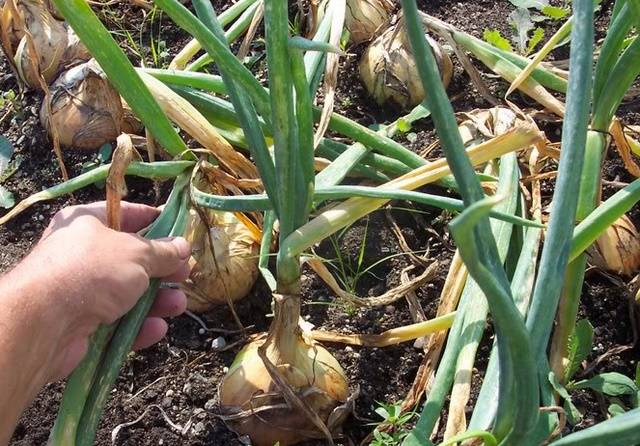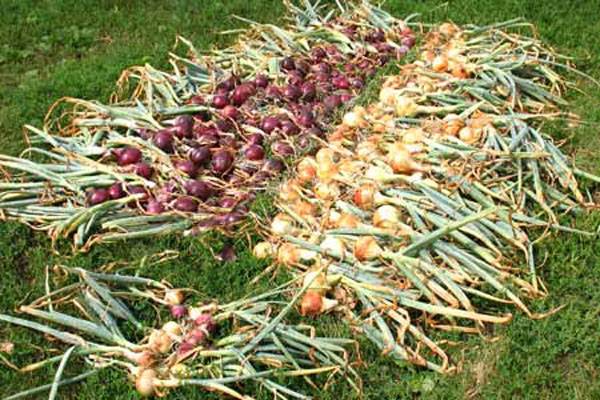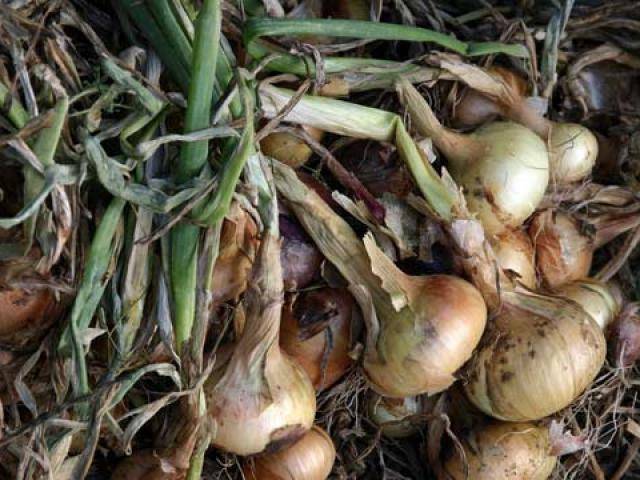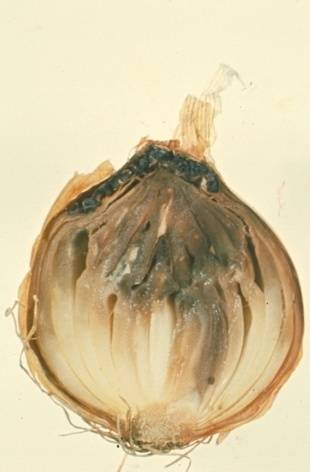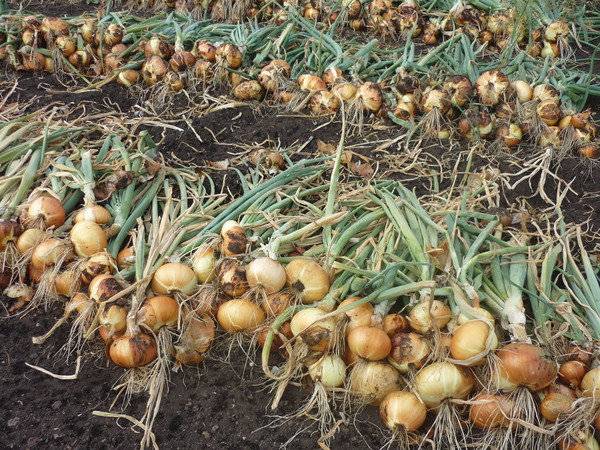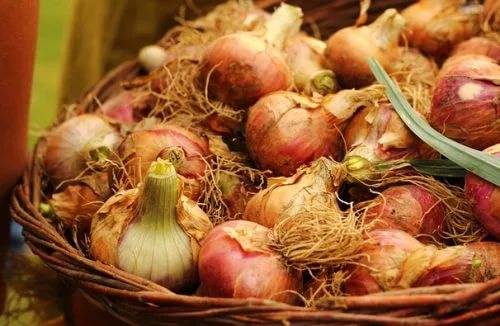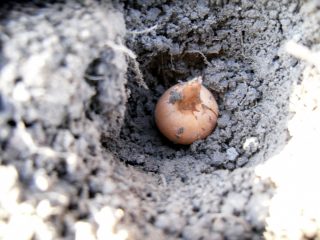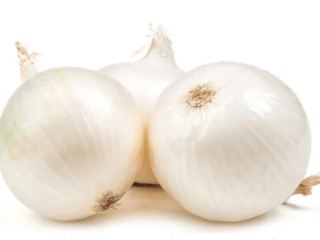Content
Experienced gardeners, who have been engaged in such a culture as onions for a single year, are well versed not only in the timing of planting, the machinery for cultivating a useful vegetable, but also in its time. cleaning... The timing of digging out onions from the garden depends on many conditions, including the climate.
Gardeners living in the Urals keep up with the inhabitants of other regions. They are also successful grow onion, leek, batun. It is difficult for beginners who are first engaged in cultivation of culture to determine the timing. harvesting onions, because for this you need to know a number of secrets. About when harvest the onion turnip in the Urals and will be discussed in the article.
Climate features and variety selection
It's no secret that the climate of the Urals does not pamper gardeners. In the northern regions, June is not yet summer, and August is more like autumn. It turns out that the vegetative period is very short, and it is difficult to call it comfortable. But despite this, the gardeners of the Urals successfully grow a variety of cultivated plants, including onions.
It is clear that not every type of onion is suitable for the Urals. Given that the summer is short, you should not choose late-ripening onion varieties. It is best to use early and mid-season varieties.
In addition, it is better to plant plants adapted specifically for the Urals. Best suited:
- Bessonovsky local and Odintsovets;
- Cape and Studtgarden Riesen;
- Strigunovsky, Karantalsky and others.
The choice of varieties is the prerogative of every gardener. After all, the main thing is not just to grow the crop, but also to harvest it on time without losses, both during digging and during storage.
Newbie mistakes
Novice gardeners in the Urals want to know when to dig out the bulbs from the garden in order to save them until the next harvest. They intuitively understand that deadlines are important, but they don't always get it right.
There are two most common mistakes to avoid. We will tell you more about them:
- Firstly, taking into account the factor of yellowing of the leaves, as a signal for harvesting, inexperienced summer residents wait until the stem and leaves of all plants in the garden turn yellow and dry completely. Therefore, they are not in a hurry to clean up. This is a serious mistake because each variety matures on its own. Even plants of the same variety do not ripen at the same time. What will happen? Overripe onions, remaining longer than laid in the ground, can re-release their roots and continue to grow. In addition, the bulb will start to rot.
- The vegetable collected ahead of time will be soft, the scales will not have time to form, therefore, during storage, a putrefactive process may begin.
In order not to lose the harvest and not be upset about the effort and time spent on growing onions, you need to know how the harvesting period is determined. After all, there are many signs by which you can determine the maturity of a vegetable. Moreover, they are practically the same for all regions of Russia, including the Urals. Although there are some peculiarities.
Determining the terms
There are many parameters to consider when you can dig onions from your garden.
Mathematical calculations
Onion packages usually indicate that onions ripen from 68 to 93 days. These figures are approximate, they do not take into account the climatic conditions of growing, weather conditions. As a rule, for a plant to ripen in any region, including the Urals, from the moment of planting the seedlings to technical maturity, 70-75 days are enough.It is for this period that you need to be guided.
To determine when to harvest, you need to record when the seed or seedling was planted. Add 70-75 days to this number. If the bow was planted on May 10, and this is the optimal time for the Urals, it turns out that technical maturity will come after July 20.
Weather
Summer weather strongly affects the maturation of any garden crops. The bow is no exception. If in the Urals there is a sunny summer with moderate rains, then the readiness of the vegetable for harvesting will practically coincide with mathematical calculations.
In less comfortable weather conditions - cold, heavy rains, ripening will be prolonged, therefore, the time for digging the onions will be postponed.
External parameters
As you can see, mathematics cannot always give an accurate answer to the question of whether it is time to dig the onions. How to be in this case. Experienced gardeners are advised to monitor the external changes of the plant.
If the onion is almost ripe, then this can be determined by the following parameters:
- Leaves and stem are yellowish, with yellowness coming from below. Change the color and tips of the upper leaves. Such a change begins, as a rule, 2 months after planting seedlings or seedlings.
- The neck at the base of the bulb becomes soft, thin, it is not able to hold the stem in an upright position, so the feathers fall on the ground.
- After pulling out the onion, examine the husk. If it is rustling, it can be removed without much difficulty, and the roots have darkened at the bottom, then the bulb is ready for harvesting.
So, we tried to answer the questions of novice gardeners, when you can start harvesting onions in the Urals.
This is the second half of July or early August.
In the old days, our grandmothers tried to remove the vegetable before Ilyin's day (August 2), because from that day the rains began. They are completely unnecessary onions at this time, even harmful.
Look at the photo of what happens to a bulb that was not harvested before the rains. Due to the delicacy of the neck, water penetrates into the head. The decay process starts from the top, gradually deepens. Such a bow cannot be saved, and it is unsuitable for food.
Time to dig out the onion:
Is it possible to accelerate the ripening process
In the Urals, especially in the northern regions, summer rarely pleases with good weather. Bad weather can deprive gardeners of the harvest, because the ripening process is stretched, and the bulbs in damp soil can rot.
What can be done in this case? There are several options for speeding up the ripening of onions. If, according to your calculations, it is already time to remove the bulbs from the garden, and the stem and leaves remain green, the neck is almost not thinned:
- You can force the stem to bend to the ground. In this way, the flow of nutrients to the leaves is reduced, and they begin to turn yellow.
- Use a small shovel to dig in the ground and lift it slightly to cut off long roots. The plant will also begin to ripen faster, as the outflow of nutrients from the green mass into the head will begin.
Cleaning features
Why else is it important to know when to start harvesting onions? The fact is that watering stops two weeks before the planned work. This is necessary in order for the vegetable to ripen and dry slightly while still in the ground. Unfortunately, this is not always possible, since nature does not consult with us. It can rain at any time.
After you have decided on a cleaning date, you can get to work. Choose onions from the garden in sunny weather. If there is a slight breeze, even better.Experienced gardeners recommend using a pitchfork to dig onions. But sometimes the onion is easily removed if the soil is dry and loose, and the bulbs are ripe (the roots become small, they break off easily).
The dug out onions are laid out in the sun so that it is saturated with its energy and "fried" well. It is easy to remove soil from such a bow. Advice! It is undesirable to cut the tops immediately after digging up, because as it dries, it will continue to deliver nutrients to the bulb, and improve the quality of the vegetable.
After sunbathing, the bulbs are harvested for ripening in a well-ventilated room, where it should lie for at least 2-3 weeks. Then the vegetables are sorted and sent for storage.
Summary
Harvesting onions in any region, including the Urals, must be done in a timely manner. That is why gardeners are interested in when to start harvesting a vegetable. We advise the gardeners of the Urals to use all the options that allow to determine the ripening of onions in a complex. Add observation to mathematical calculations, the correct choice of variety. The bulbs harvested on time will last until the next harvest.
